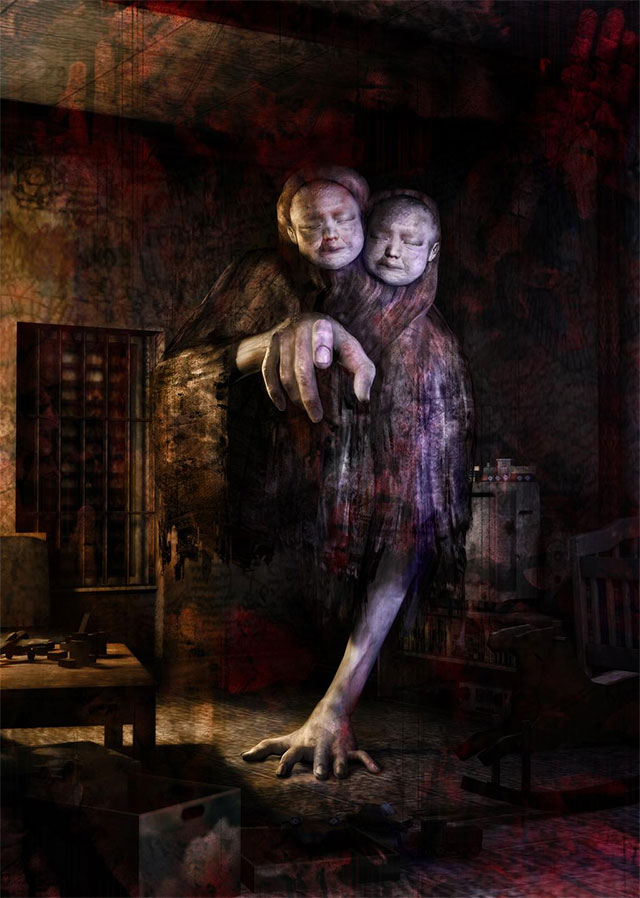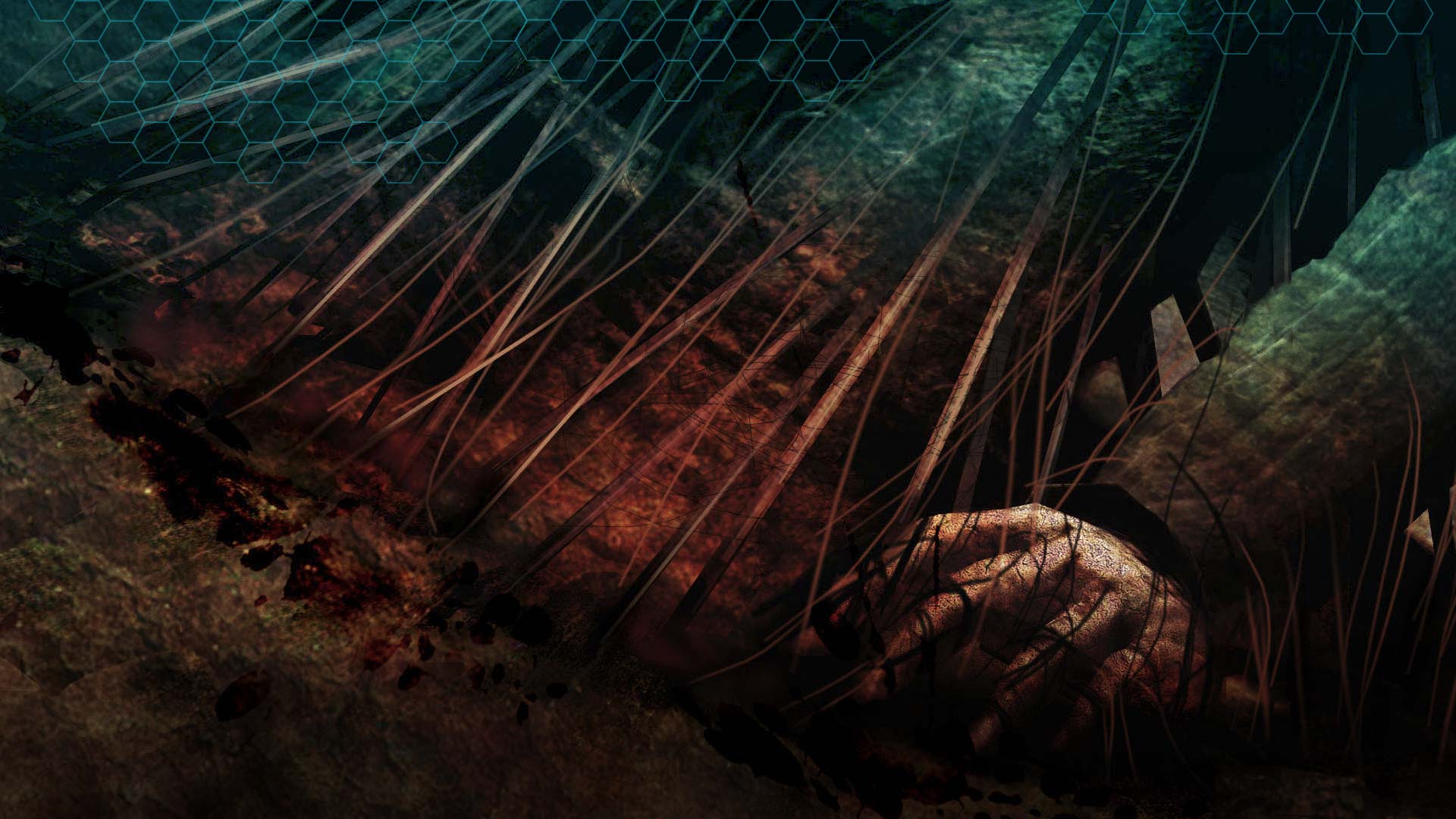Slender. God-d*** Slender. When I first heard of this game and its simple yet suprisingly startling premise, I was so very intrigued, excited and horrified. I love the Survival Horror genre of video games and have a long standing history with it. And to the best of my knowledge have played all the best games that the genre has to offer, be it the classic PlayStation era Silent Hill series or the somewhat under appreciated works of Frictional Games. You see, I’ve always had an adoration for the art that inspires these creations, the best example I can give is this; I’m Irish. Being Irish, I absolutely love the fact that Silent Hill artist Masahiro Ito was inspired by the Irish artist, Francis Bacon. This love of the Horror sub genre got me thinking. Why do we enjoy being scared? What is it about us that makes us want to be shaken to our core? Surely the human condition is one that is centred around self preservation? So why do we throw ourselves into a world full of terror? Do we enjoy haunting beasts that bay for our blood? Let me give you a few ideas and some food for thought.

Twin Victims as seen in Silent Hill 4: The Room. [PlayStation 2, Konami]
There was a study performed a few years ago on how fear affects the human body. It outlines the obvious facts that surround the human reaction to fear, such as elevated heart rate, anxiety, heightened senses and sharpened reflexes, but what the study fails to do (and probably will always fail to do) is tell us “why” some of us actively seek fear. When we think of why we play horror games, I generally think of it as a means to restore the human condition to a more empathetic state. Now days when we watch the news, we are bombarded with images depicting war, poverty, famine and death. We have become, through no fault of our own emotionally numb to the world around us. So we must seek our terror and fear in a land of make belief. In order for a player to be scared, certain methods and subtle tricks must be employed, otherwise you’re just relying on jump-scares, the lowest form of fear. The aforementioned artist Francis Bacon was famous for his tormented visages that represented the most depraved and low emotions we posses whilst somehow maintaining a certain level of attractiveness that draws the eye. But simply making something “look” scary, doesn’t necessarily make it scary. In the same study of fear, co-author of the paper, Michelle Craske posited that naming the subject that causes you discomfort, could help reduce your anxiety and thus make the feeling of fear lesser. “This is unique because it differs from typical procedures in which the goal is to have people think differently about the experience — to change their emotional experience or change the way they think about it so that it doesn’t make them anxious,” she says, “Here, there was no attempt to change their experience, just to state what they were experiencing.” The testing of control groups brought positive results, which is all well and good. But unfortunatly, the method can’t be applied to all fears. How can it work if you can’t even explain or name the reason you’re scared?

Francis Bacon’s “Study after ” [Also known as The Screaming Pope]
To induce fear, this creation that subjects us to the mental torture must represent something, it must have its own set of ideals and its own reasons for committing its atrocities. This depth of character creation (when done properly) can make a human seem wholey alien. Purely because we simply cannot fathom their twisted ideals. We then give them form and reason in our own minds, be it intellectual or purely animal in nature. And once a creation has a purpose it can become a figure of iconic horror that resonates with our minds, thus rendering it a horrific creation.
The Silent Hill series first came to life on January 31, 1999 and it brought horror to gaming in ways that some believed impossible. Some people (myself included) believe that it was Silent HIll that started the Survial Horror Genre in earnest, despite being in competition with the already massively popular game, Resident Evil which came to stores in March 22, 1996. On September 24, 2001, Masahiro Ito introduced us to a creature known as Pyramid Head, or Red Pyramid for the purists. Pyramid Head is a tall, mute and well muscled creature with a large pyramidal cage on its head that stops us from seeing its features. Not very scary, right? Well, when it’s given a reason for existing outside of just looking creepy…well let’s just say I wouldn’t want to cross him. Pyramid Head is a torturer and resident of Silent Hill, the reason for its existence is to inflict torment upon his prey in as many ways as possible: physical, mental, emotional. It’s all fair game. To this end, it can create tulpas. Supernatural beings brought into existence through sheer force of will. It has a smock made up of the flayed skin of its conquests and victims and it wants nothing more than to shatter your mind and body. Now that is someone I would want to mess with.
Imagine being trapped and alone, being hunted down by the Pyramid Head. It wouldn’t be very pleasant, would it? But despite this, we do imagine being trapped and hunted by it. Because we know that there’s a chance we can outrun it, maybe even survive its deluge of horror and tricks. This is what compels us to dive into our fear. As I said we have become emotionally numb to our world around us, but this hasn’t changed our will to live, and it goes without saying that once you experience something truly scary, you respect and understand life a little better.
Pyramid Head as seen in Silent Hill 2. [PlayStation 2, Konami]
The most recent example of popular survival horror would be Slender . The Slender Man is a creature, that was created [in a genre called fakelore] purely with the intent of harming us. We don’t really know why and we don’t really know how. All that we know for certain, he’s is always watching. Slender Man was created by Mark Hadley inside an online forum called “something awful” and while Slendy himself isn’t very scary, a tall man with no face that wears a suit and has multiple long spindly arms he is at least unerving, but not scary. However, put yourself into his game where his intent is made clear and he’s pitted agaisnt you…He becomes another entity completely.
Picture this, if you will. You wake up in a forest, you don’t know how you got there and you don’t know why you have been brought here. All you find in your pockets is a flash light. It’s night, and the trees loom over your character and quite obscure the path forward. So you move forward, rather cautiously I might add, and come across a tree with a page attached to it, you pay it no attention and ball it up into your pocket. You turn around and catch a glimpse of something in the trees, a man perhaps? But he isn’t there any more. Thus begins Slendy’s hunt for you because, “once you are aware of him, he is aware of you”. Slender Man will now relentlessly stalk you wide and far, getting closer and louder until your speakers blare white noise static and high pitch wailing. Your screen flickers in and out of action and a tall foreboding man is in your face, wheezing and reaching for you, then its game over my friend.
That’s all well and good, but why do we subject ourselves to this? Because, like before we just might survive and that’s good for us.
Survival is keyed into our very being, and we will always strive to survive in even the most adverse conditions. That is why we play these games. We already know, [subconsciously at least] that we are growing more numb to the surrounding worlds afflictions, so we must bring these feelings down upon ourselves to help reinforce our humanity. They allow us to have a bit more empathy and concern for other people and I think that this forced fear and forced empathy can only be a good thing, helping us understand those around us and giving us the ability to care. At least that’s what I choose to believe, we could just be crazy.


 …WOOLY DESERVES BETTER LOL!
…WOOLY DESERVES BETTER LOL!